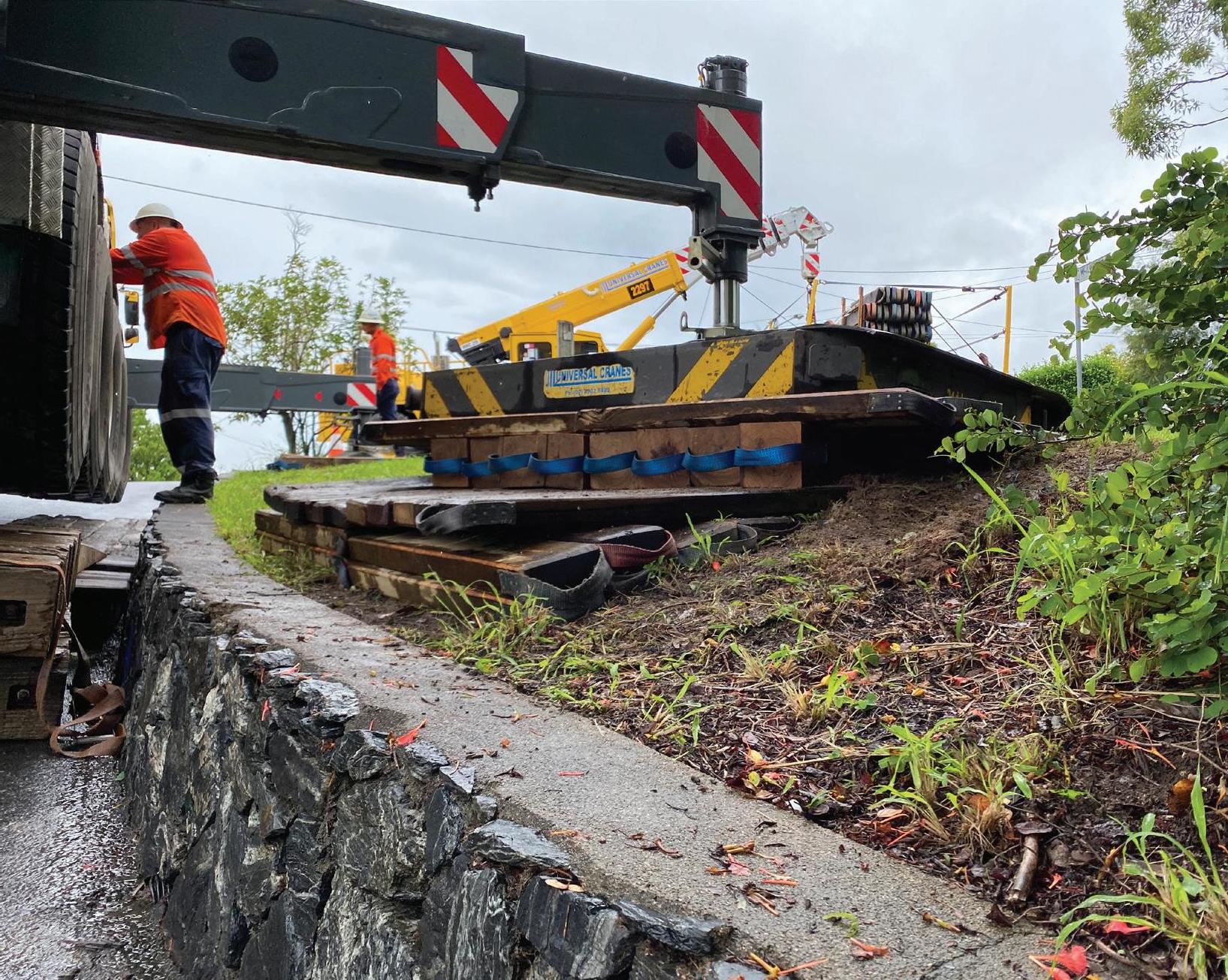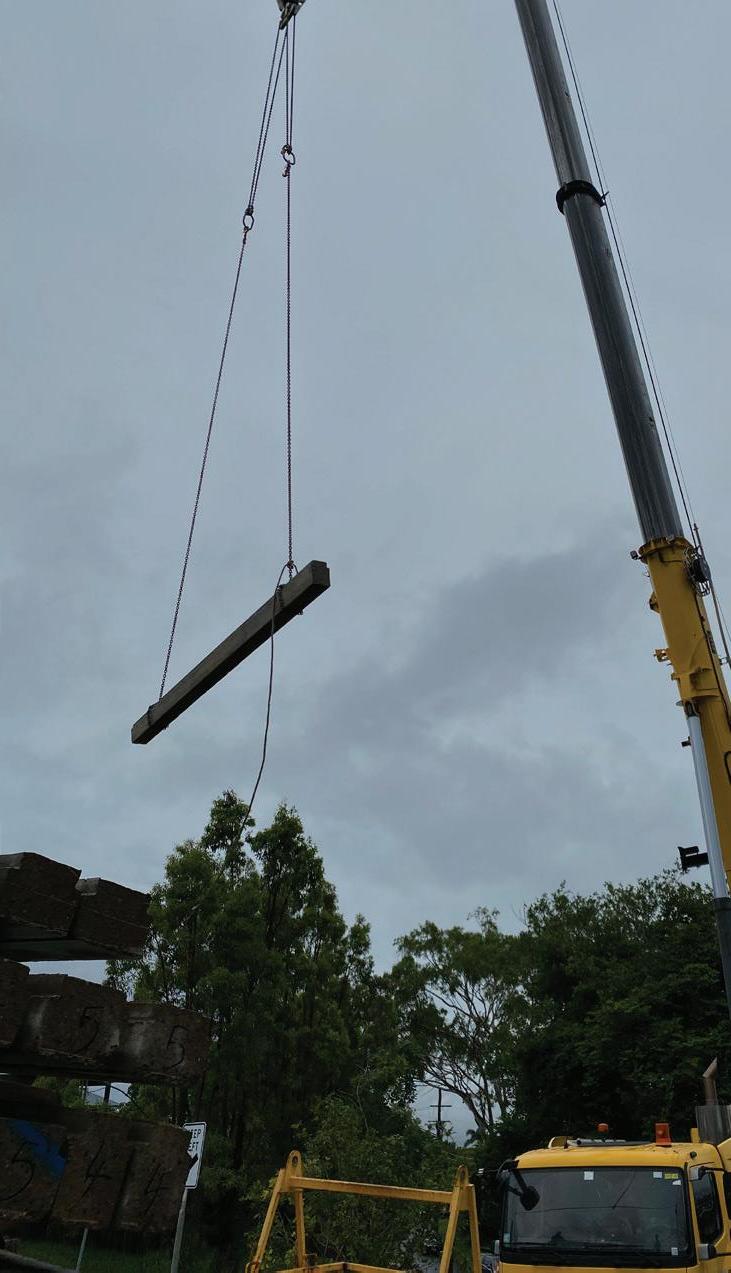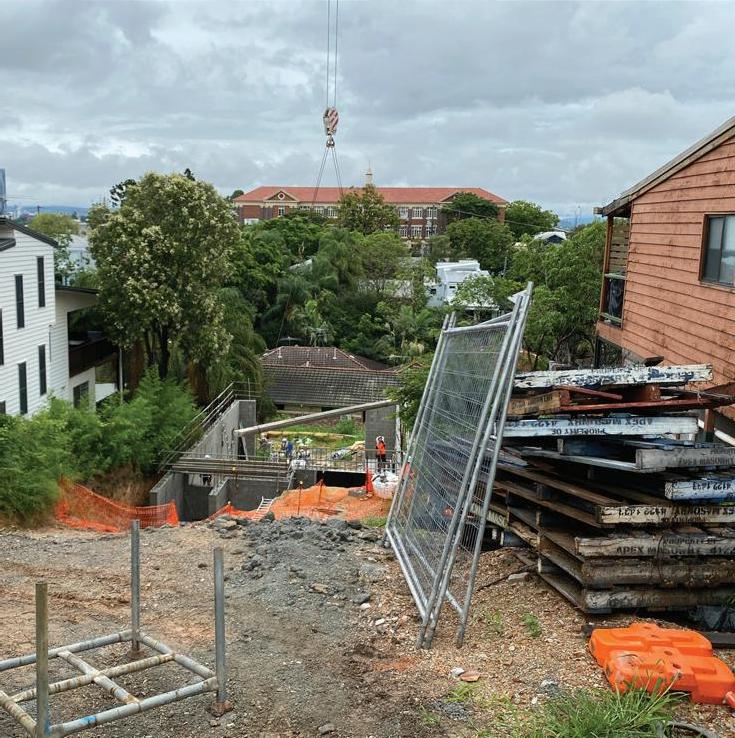3 minute read
SPOTLIGHT ON
Next Article
Installation of Deck Units in Brisbane An example of good practice
Universal Cranes was contracted to install prestressed deck units at a private residential build in Balmoral, Brisbane. The site was complex with the requirement to setup on a split street sloping road surrounded by power lines, residential housing, vehicular and foot traffic, and a large radius of 44m. With extensive lift studies carried out and safe execution of the lift, the project provides a great example of good practice in outrigger design.
The lift studies determined a GMK4100L was the most suitable crane for the job, with its 60m boom and smaller outrigger base being the primary deciding factors for this complex site layout and operating environment.
In the lead up to the job, Brisbane experienced terrible weather with rain and thunderstorms forecast for lift day. Due to the effect inclement weather would have on an already difficult setup, the job was rescheduled for the following week. However, the GMK4100L wasn’t available for this new date so the setup was redesigned to suit a GMK5130, which still provided a good solution for the site demands.

Setup obstacles
The setup was the most crucial part in delivering the job safely. A variety of different mats, pads, timbers, and wedges were to be used to get the GMK5130 ready to lift the deck units.
The crane was moved to the best possible position and the ground was marked as a reference point to commence the build. The main obstacle was a 700mm centre median strip on the upside of the setup that had to be built over. A large pad was created using two 3x1.8m and two 5x1m timber mats along with standard outrigger timbers and wedge timbers to form a platform that the crane could be reversed onto. Although this was a start, the team were a long way from achieving the required height to level the crane.
The next step was to level each leg so that the machine could be raised inch by inch. Two 5x1m timber mats were used for the rear left hand outrigger to create a level pad to start alleviating issues caused by the gutter. This also lowered the bearing pressure as the adjacent block had been significantly cut. In turn, this enabled the use of two 1.8x1.8m bolted timber outrigger mats, a 1.6x2.0m steel pad, and several layers of outrigger timbers.
The rear right hand position required dirt to be removed from the median strip where
Getting the crane up to height was an incredible effort, adding one layer at a time on each of the rear legs and slewing the crane to transfer the weight before the operator could float the required leg.

a stillage of wedge timbers and outrigger timbers were used to create a level pad. The steel pad was then placed on top of this before outrigger timbers were layered to reach the final height. The two front outriggers were less complex to setup only requiring a handful of timbers on top of the steel pads.
Slow and steady
Getting the crane up to height was an incredible effort, adding one layer at a time on each of the rear legs and slewing the crane to transfer the weight before the operator could float the required leg. The operator remained in constant radio communication with the riggers. The setup took several hours to complete with safety as the number one priority. The crew took extreme care to complete each step in the correct order so the stacks were always stable. A few minor adjustments throughout the process ensured this was achieved. The final height was 2.5m under the rear of the machine with an extremely stable setup allowing the operator to complete the job safely.
Planning is key
The importance of a safe and wellengineered setup is key when working in a difficult environment. The pads/ mats were chosen for several reasons, with ease of use and safety predominant factors. Prefabricated mats were the most suitable in reaching the required height and minimising movement for this job. The methodology worked well in the elevated setup, and a great outcome was achieved for the client.









